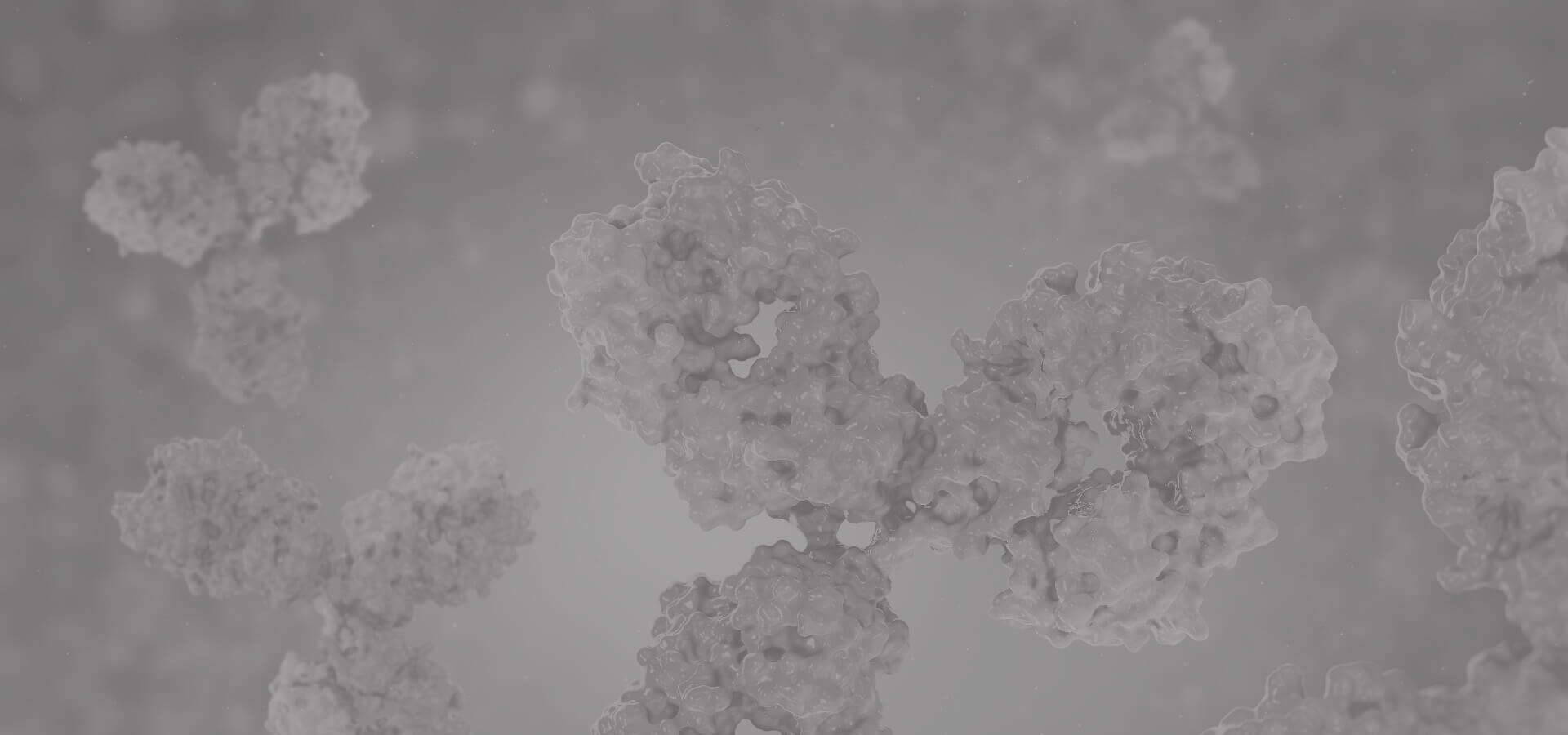NMI
NMYC interactor (NMI) encodes a protein that interacts with NMYC and CMYC (two members of the oncogene Myc family), and other transcription factors containing a Zip, HLH, or HLH-Zip motif. The NMI protein also interacts with all STATs except STAT2 and augments STAT-mediated transcription in response to cytokines IL2 and IFN-gamma. The NMI mRNA has low expression levels in all human fetal and adult tissues tested except brain and has high expression in cancer cell line-myeloid leukemias. [provided by RefSeq, Jul 2008]
Full Name
N-Myc And STAT Interactor
Function
Acts as a signaling pathway regulator involved in innate immune system response (PubMed:9989503, PubMed:26342464, PubMed:29038465, PubMed:29350881).
In response to interleukin 2/IL2 and interferon IFN-gamma/IFNG, interacts with signal transducer and activator of transcription/STAT which activate the transcription of downstream genes involved in a multitude of signals for development and homeostasis (PubMed:9989503, PubMed:29377960).
Enhances the recruitment of CBP/p300 coactivators to STAT1 and STAT5, resulting in increased STAT1- and STAT5-dependent transcription (PubMed:9989503).
In response to interferon IFN-alpha, associates in a complex with signaling pathway regulator IFI35 to regulate immune response; the complex formation prevents proteasome-mediated degradation of IFI35 (PubMed:10779520, PubMed:10950963).
In complex with IFI35, inhibits virus-triggered type I IFN-beta production when ubiquitinated by ubiquitin-protein ligase TRIM21 (PubMed:26342464).
In complex with IFI35, negatively regulates nuclear factor NF-kappa-B signaling by inhibiting the nuclear translocation, activation and transcription of NF-kappa-B subunit p65/RELA, resulting in the inhibition of endothelial cell proliferation, migration and re-endothelialization of injured arteries (PubMed:29350881).
Negatively regulates virus-triggered type I interferon/IFN production by inducing proteosome-dependent degradation of IRF7, a transcriptional regulator of type I IFN, thereby interfering with cellular antiviral responses (By similarity).
Beside its role as an intracellular signaling pathway regulator, also functions extracellularly as damage-associated molecular patterns (DAMPs) to promote inflammation, when actively released by macrophage to the extracellular space during cell injury or pathogen invasion (PubMed:29038465).
Macrophage-secreted NMI activates NF-kappa-B signaling in adjacent macrophages through Toll-like receptor 4/TLR4 binding and activation, thereby inducing NF-kappa-B translocation from the cytoplasm into the nucleus which promotes the release of pro-inflammatory cytokines (PubMed:29038465).
In response to interleukin 2/IL2 and interferon IFN-gamma/IFNG, interacts with signal transducer and activator of transcription/STAT which activate the transcription of downstream genes involved in a multitude of signals for development and homeostasis (PubMed:9989503, PubMed:29377960).
Enhances the recruitment of CBP/p300 coactivators to STAT1 and STAT5, resulting in increased STAT1- and STAT5-dependent transcription (PubMed:9989503).
In response to interferon IFN-alpha, associates in a complex with signaling pathway regulator IFI35 to regulate immune response; the complex formation prevents proteasome-mediated degradation of IFI35 (PubMed:10779520, PubMed:10950963).
In complex with IFI35, inhibits virus-triggered type I IFN-beta production when ubiquitinated by ubiquitin-protein ligase TRIM21 (PubMed:26342464).
In complex with IFI35, negatively regulates nuclear factor NF-kappa-B signaling by inhibiting the nuclear translocation, activation and transcription of NF-kappa-B subunit p65/RELA, resulting in the inhibition of endothelial cell proliferation, migration and re-endothelialization of injured arteries (PubMed:29350881).
Negatively regulates virus-triggered type I interferon/IFN production by inducing proteosome-dependent degradation of IRF7, a transcriptional regulator of type I IFN, thereby interfering with cellular antiviral responses (By similarity).
Beside its role as an intracellular signaling pathway regulator, also functions extracellularly as damage-associated molecular patterns (DAMPs) to promote inflammation, when actively released by macrophage to the extracellular space during cell injury or pathogen invasion (PubMed:29038465).
Macrophage-secreted NMI activates NF-kappa-B signaling in adjacent macrophages through Toll-like receptor 4/TLR4 binding and activation, thereby inducing NF-kappa-B translocation from the cytoplasm into the nucleus which promotes the release of pro-inflammatory cytokines (PubMed:29038465).
Biological Process
Interferon-gamma-mediated signaling pathwayIEA:InterPro
Macrophage activation involved in immune responseManual Assertion Based On ExperimentIDA:UniProtKB
Negative regulation of cell population proliferationManual Assertion Based On ExperimentIMP:UniProtKB
Negative regulation of innate immune responseManual Assertion Based On ExperimentIMP:UniProtKB
Negative regulation of interferon-alpha productionIEA:Ensembl
Negative regulation of interferon-beta productionIEA:Ensembl
Negative regulation of NIK/NF-kappaB signalingManual Assertion Based On ExperimentIDA:UniProtKB
Positive regulation of inflammatory responseISS:UniProtKB
Positive regulation of innate immune responseISS:UniProtKB
Positive regulation of NIK/NF-kappaB signalingManual Assertion Based On ExperimentIDA:UniProtKB
Positive regulation of protein K48-linked ubiquitinationIEA:Ensembl
Receptor signaling pathway via JAK-STATManual Assertion Based On ExperimentTAS:UniProtKB
Response to virusISS:UniProtKB
Toll-like receptor 4 signaling pathwayISS:UniProtKB
Transcription by RNA polymerase IIIEA:InterPro
Macrophage activation involved in immune responseManual Assertion Based On ExperimentIDA:UniProtKB
Negative regulation of cell population proliferationManual Assertion Based On ExperimentIMP:UniProtKB
Negative regulation of innate immune responseManual Assertion Based On ExperimentIMP:UniProtKB
Negative regulation of interferon-alpha productionIEA:Ensembl
Negative regulation of interferon-beta productionIEA:Ensembl
Negative regulation of NIK/NF-kappaB signalingManual Assertion Based On ExperimentIDA:UniProtKB
Positive regulation of inflammatory responseISS:UniProtKB
Positive regulation of innate immune responseISS:UniProtKB
Positive regulation of NIK/NF-kappaB signalingManual Assertion Based On ExperimentIDA:UniProtKB
Positive regulation of protein K48-linked ubiquitinationIEA:Ensembl
Receptor signaling pathway via JAK-STATManual Assertion Based On ExperimentTAS:UniProtKB
Response to virusISS:UniProtKB
Toll-like receptor 4 signaling pathwayISS:UniProtKB
Transcription by RNA polymerase IIIEA:InterPro
Cellular Location
Cytoplasm
Nucleus
Secreted
Cytoplasmic NMI localizes in punctate granular structures (PubMed:9781816, PubMed:10950963).
Nuclear localization increased following IFN-alpha treatment (PubMed:9781816, PubMed:10950963).
Extracelullar following secretion by macrophage (PubMed:29038465).
Nucleus
Secreted
Cytoplasmic NMI localizes in punctate granular structures (PubMed:9781816, PubMed:10950963).
Nuclear localization increased following IFN-alpha treatment (PubMed:9781816, PubMed:10950963).
Extracelullar following secretion by macrophage (PubMed:29038465).
PTM
Ubiquitinated. 'Lys-63'-linked ubiquitination by TRIM21 promotes interaction with IFI35 and inhibits virus-triggered type I IFN-beta production.
View more
Anti-NMI antibodies
+ Filters
 Loading...
Loading...
Target: NMI
Host: Mouse
Antibody Isotype: IgG2b, κ
Specificity: Human
Clone: 9D8
Application*: E, IH, WB
Target: NMI
Host: Mouse
Antibody Isotype: IgG2b
Specificity: Human, Mouse, Rat
Clone: 2F3
Application*: IHC-P, WB
Target: NMI
Host: Mouse
Antibody Isotype: IgG2b, κ
Specificity: Human
Clone: 1E6
Application*: WB, E
Target: NMI
Host: Mouse
Specificity: Human
Clone: D-10
Application*: WB, IP, IF, P, E
Target: NMI
Host: Mouse
Antibody Isotype: IgG2b, κ
Specificity: Human
Clone: 9B8
Application*: E, IH, WB
Target: NMI
Host: Mouse
Antibody Isotype: IgG1
Specificity: Human
Clone: 3C6
Application*: WB
Target: NMI
Host: Mouse
Antibody Isotype: IgG2b
Specificity: Human
Clone: 2C1
Application*: WB
Target: NMI
Host: Mouse
Antibody Isotype: IgG2a
Specificity: Human
Clone: 1A8
Application*: WB
Target: NMI
Host: Mouse
Antibody Isotype: IgG
Specificity: Human
Clone: CBWJN-0242
Application*: E, WB
Target: NMI
Host: Mouse
Antibody Isotype: IgG2b, κ
Specificity: Human
Clone: 9E8
Application*: E, P, WB
Target: NMI
Host: Mouse
Antibody Isotype: IgG2b, κ
Specificity: Human
Clone: 10E5
Application*: E, WB
Target: NMI
Host: Mouse
Antibody Isotype: IgG2b
Specificity: Human
Clone: 1C1
Application*: IP, M
More Infomation
Hot products 
-
Mouse Anti-CAT Recombinant Antibody (724810) (CBMAB-C8431-LY)

-
Mouse Anti-ALX1 Recombinant Antibody (96k) (CBMAB-C0616-FY)

-
Mouse Anti-BSN Recombinant Antibody (219E1) (CBMAB-1228-CN)

-
Mouse Anti-APC Recombinant Antibody (CBYC-A661) (CBMAB-A3036-YC)

-
Mouse Anti-CDKL5 Recombinant Antibody (CBFYC-1629) (CBMAB-C1689-FY)

-
Mouse Anti-AFDN Recombinant Antibody (V2-58751) (CBMAB-L0408-YJ)

-
Mouse Anti-BPGM Recombinant Antibody (CBYY-1806) (CBMAB-2155-YY)

-
Mouse Anti-CIITA Recombinant Antibody (CBLC160-LY) (CBMAB-C10987-LY)

-
Mouse Anti-AFM Recombinant Antibody (V2-634159) (CBMAB-AP185LY)

-
Mouse Anti-AQP2 Recombinant Antibody (E-2) (CBMAB-A3358-YC)

-
Mouse Anti-DLL4 Recombinant Antibody (D1090) (CBMAB-D1090-YC)

-
Rat Anti-CD63 Recombinant Antibody (7G4.2E8) (CBMAB-C8725-LY)

-
Mouse Anti-CCS Recombinant Antibody (CBFYC-1093) (CBMAB-C1150-FY)

-
Mouse Anti-CD19 Recombinant Antibody (CBXC-1224) (CBMAB-C1491-CQ)

-
Mouse Anti-ARSA Recombinant Antibody (CBYC-A799) (CBMAB-A3679-YC)

-
Mouse Anti-BIRC3 Recombinant Antibody (315304) (CBMAB-1214-CN)

-
Rabbit Anti-AP2M1 (Phosphorylated T156) Recombinant Antibody (D4F3) (PTM-CBMAB-0610LY)

-
Mouse Anti-ACTN4 Recombinant Antibody (V2-6075) (CBMAB-0020CQ)

-
Mouse Anti-ALDOA Recombinant Antibody (A2) (CBMAB-A2316-YC)

-
Mouse Anti-CASQ1 Recombinant Antibody (CBFYC-0863) (CBMAB-C0918-FY)

For Research Use Only. Not For Clinical Use.
(P): Predicted
* Abbreviations
- AActivation
- AGAgonist
- APApoptosis
- BBlocking
- BABioassay
- BIBioimaging
- CImmunohistochemistry-Frozen Sections
- CIChromatin Immunoprecipitation
- CTCytotoxicity
- CSCostimulation
- DDepletion
- DBDot Blot
- EELISA
- ECELISA(Cap)
- EDELISA(Det)
- ESELISpot
- EMElectron Microscopy
- FFlow Cytometry
- FNFunction Assay
- GSGel Supershift
- IInhibition
- IAEnzyme Immunoassay
- ICImmunocytochemistry
- IDImmunodiffusion
- IEImmunoelectrophoresis
- IFImmunofluorescence
- IGImmunochromatography
- IHImmunohistochemistry
- IMImmunomicroscopy
- IOImmunoassay
- IPImmunoprecipitation
- ISIntracellular Staining for Flow Cytometry
- LALuminex Assay
- LFLateral Flow Immunoassay
- MMicroarray
- MCMass Cytometry/CyTOF
- MDMeDIP
- MSElectrophoretic Mobility Shift Assay
- NNeutralization
- PImmunohistologyp-Paraffin Sections
- PAPeptide Array
- PEPeptide ELISA
- PLProximity Ligation Assay
- RRadioimmunoassay
- SStimulation
- SESandwich ELISA
- SHIn situ hybridization
- TCTissue Culture
- WBWestern Blot

Online Inquiry







